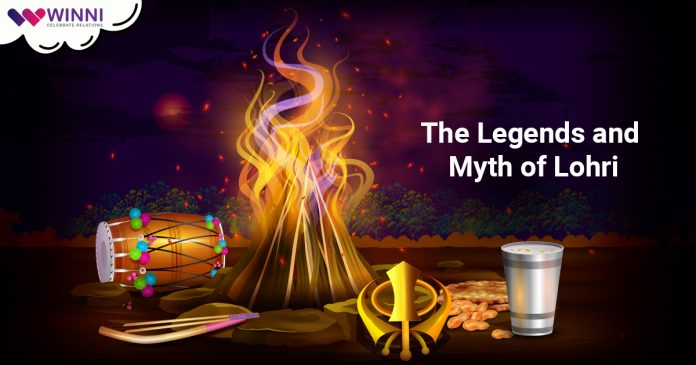Lohri is one of the most popular festivals in Northern India, especially in the Punjab region. The festival falls on January 13 every year, marking the end of winter and a celebration of the harvest season. The day is celebrated with a bonfire, traditional food, folk music, and dancing. Besides its cultural and traditional significance, Lohri is surrounded by fascinating legends and myths. All of these explain the origins and significance of the festival. Let’s take a closer look at some of the most popular Lohri stories.
The Legend of Dulla Bhatti
One of the most popular Lohri songs is “Sunder Mundriye” — which celebrates the heroism of Dulla Bhatti. Dulla Bhatti, often referred to as the “Robin Hood of Punjab” was a bandit and freedom fighter during the reign of the Mughal emperor Akbar. The man used to steal from the rich for the poor and rescue girls sold off to the Mughals.
Once upon a time, he rescued two young girls from forced marriages to a local Mughal layman. He took them under his protection and arranged for their marriages to men of their choice. From then onwards, he is remembered for his acts of bravery and kindness, particularly towards the oppressed.
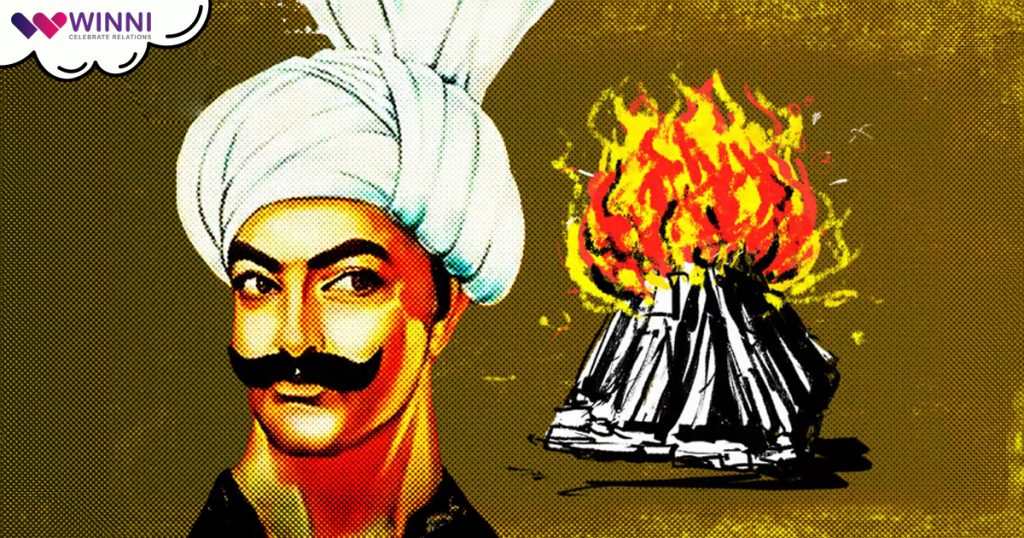
The song “Sunder Mundriye,” narrates this tale and his role as a protector of the weak. It encourages the youth to protect the honor of their sisters, and daughters and punish those who try to dishonor them.
The Myth of Lohri and the Sun God
Lohri is also associated with the Sun God as it marks the transition from the cold winter months to the warmth of spring. When the chills of winter begin to set down, the people of Punjab harvest rabi crops, in the honor of Sun God.
According to science, Lohri is the day when the Sun begins its journey northward. This leads to warmer weather and a more abundant harvest. Therefore, the Punjabi tradition thanks the lord for its warmth and light. After all, they are essential for the growth of crops like wheat, mustard, and sugarcane.
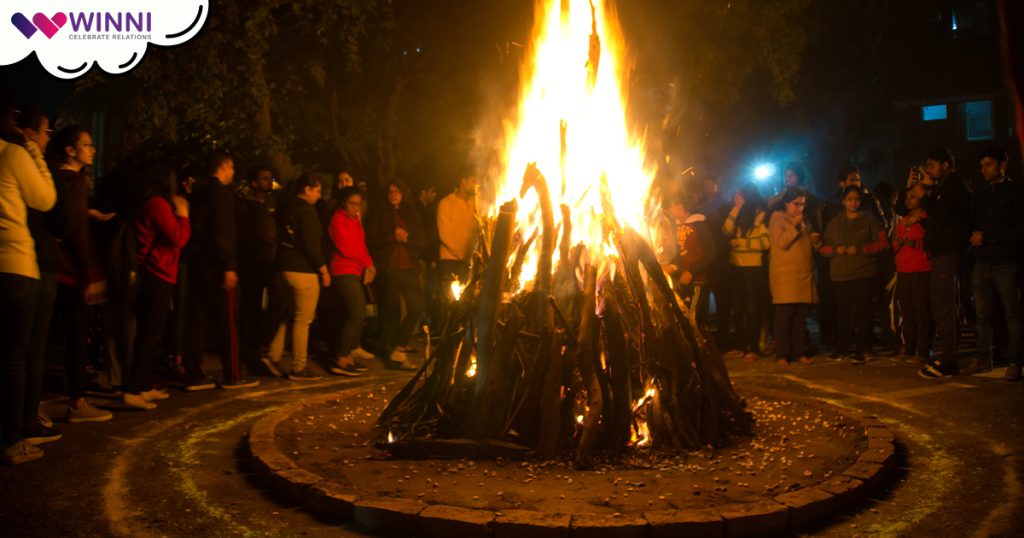
The flames of the Lohri symbolize the hope for the warmth of the sun. As offerings, people gather around the bonfire, do prayers, and offer sesame seeds(til), gajak, jaggery, rewri, peanuts, and popcorn — foods that are associated with warmth.
The Story of the Demoness Holika
Another Lohri myth is the story of Holika, the sister of the demon king Hiranyakaship from Hindu mythology. Holika had a boon to remain unharmed by the fire. Upon her brother’s order, she used this power to burn her nephew, Prahlad who was a devoted worshiper of Lord Vishnu.
However, her evil attempt failed as the divine intervention of Lord Vishnu protected the boy, while Holika herself was consumed by the flames. Other than carrying the basis of the festival of Holi, it also carries significance for Lohri. The bonfire during Lohri is seen as a symbol of the triumph of good over evil. The fire represents the destruction of negative forces and the arrival of positivity by burning away the darkness and making way for a new, prosperous year.
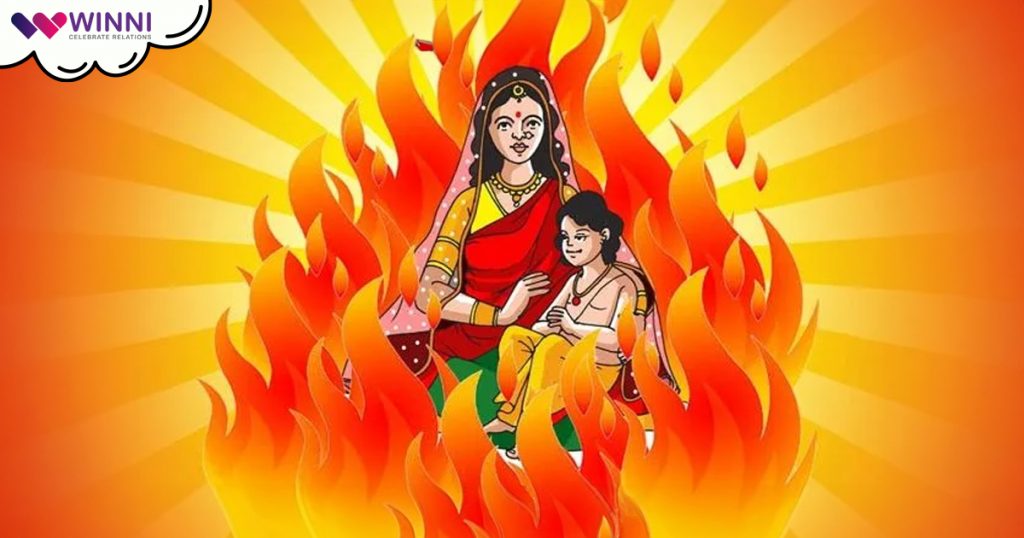
The Legend of Surajmal
Another legendary story associated with Lohri is the one of Surajmal. He was a young man who was deeply in love with a girl named Lohri. They both were part of a rural community, and their love was celebrated by the villagers.
However, once upon a time, their village was threatened by a harsh winter, which brought severe cold and famine to the land. The problem rose to an extent where the villagers were struggling to survive, and there was little hope for a good harvest.
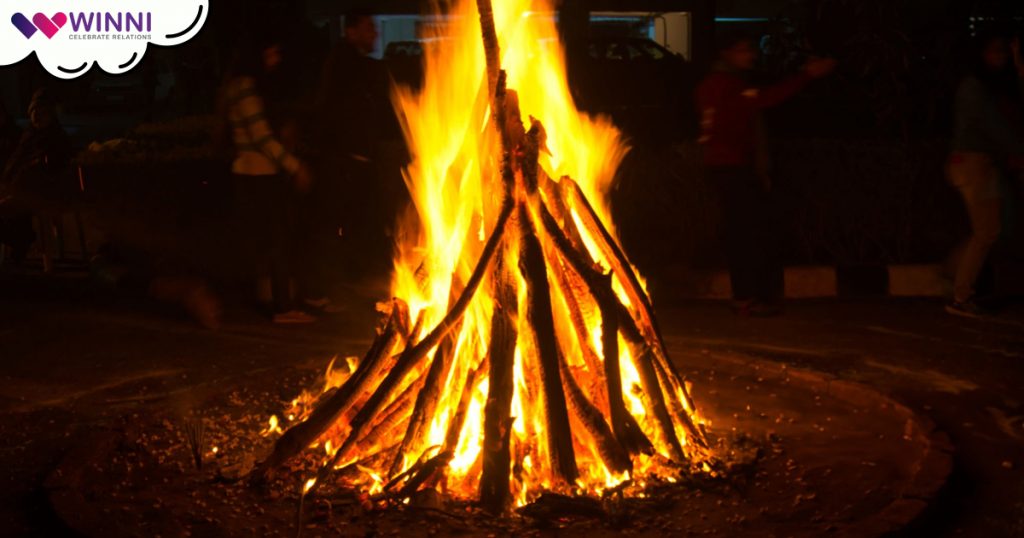
Surajmal was desperate to save the village and ensure the return of prosperity. Therefore, he made a vow to the Sun God that he would sacrifice his own happiness if it meant that the village would survive. Moved by his devotion, the Sun God began to warm up the weather. This brings new hope & life to the people and abundance to the land.
The festival of Lohri is said to honor his love for Lohri and his selflessness for the well-being of his people.
The Punjab Harvest Season
Everyone is familiar with the fact that Lohri is connected to the harvest season, especially sugarcane, wheat, and mustard. Although there’s a myth related to this too!
There was a time when the harvest in Punjab had failed, and the people were worried about their survival. That’s when the farmers came together to pray to the gods for a good harvest. Their prayers were answered with bountiful crops. To express their gratitude, they lit bonfires and danced in celebration. The people thanked the gods and the Sun for their abundance, and this ritual grew into the celebration of Lohri.
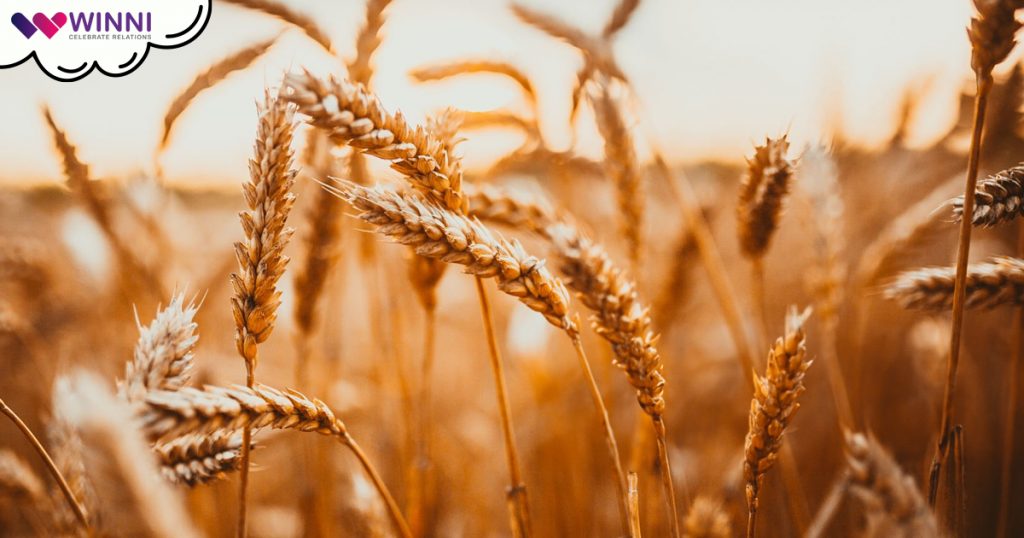
Myth or Legend — Lohri Bring People Together!
The legends and the myth of Lohri do not have any grounds. But they still add a layer of depth and meaning to this joyful festival. Whether it’s the celebration of a good harvest, the welcoming of longer days, or the triumph of good over evil, Lohri brings people together to share the warmth and light of the season. Every year, people gather around the bonfire, sing folk songs, and dance to the beats of dhol to celebrate Lohri and keep these stories alive for generations to come.

